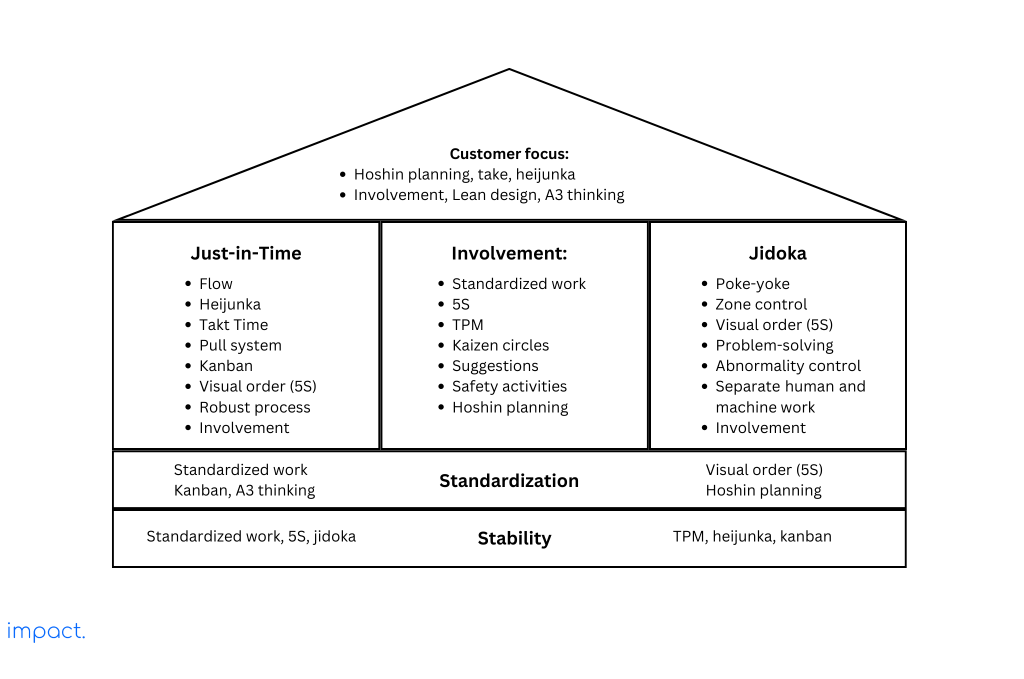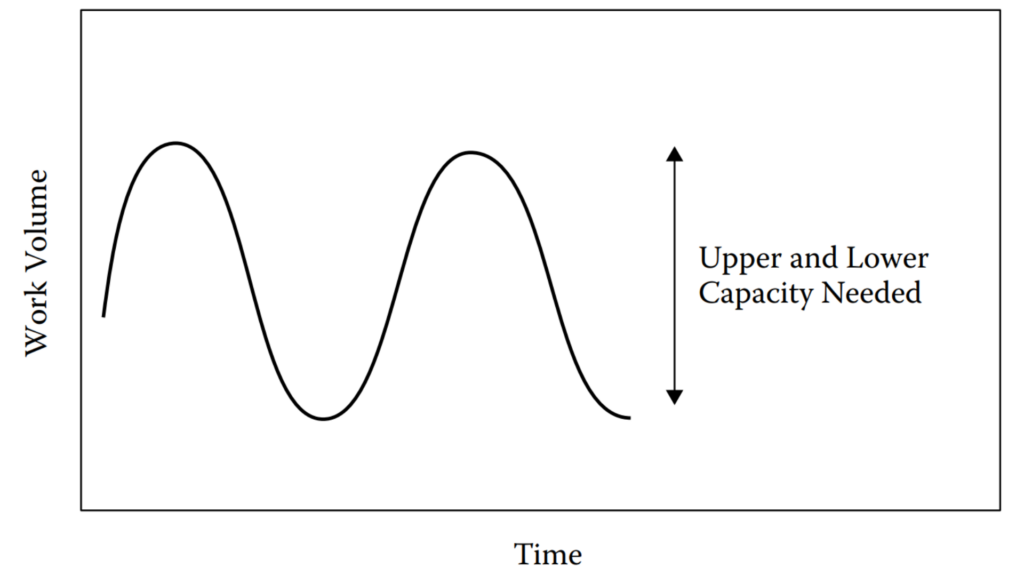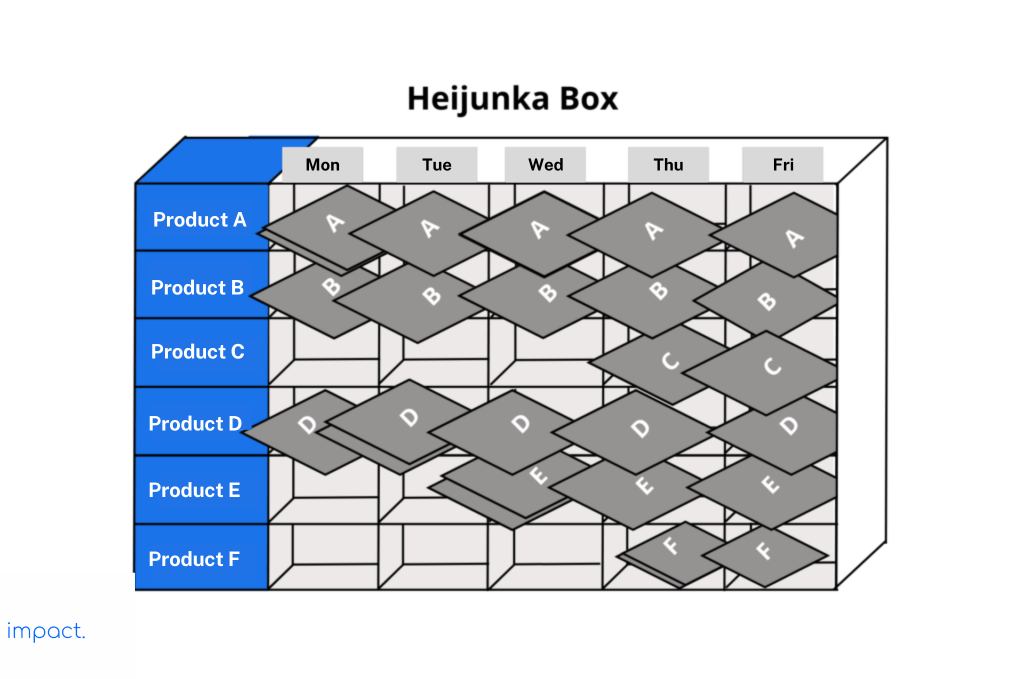Kanban: Definition, 6 Rules, and its Benefits
Kanban is a crucial part of the Just in Time (JIT) system, which we discussed…
Sean Thobias
May 17, 2025Heijunka forms an integral part of the Just in Time (JIT) system, which we discussed in a previous chapter. It serves as a foundational element within the House of Lean Production.

Heijunka organizes production that balances daily or monthly work to meet specific targets and requirements. Toyota developed this approach to move away from the traditional method of assembling cars in large batches based on demand.
Here is a detailed explanation of the definitions, methods, and benefits of Heijunka:
Heijunka, or product leveling, is evenly distributing production volumes over time. It helps companies respond to changes in demand and make the most of their capacity.
Some assembly departments prefer sticking to one product for a long time to avoid switching, but this choice has drawbacks. The wait time may be longer if a customer requests something that is not currently available. To improve this situation, the company may consider investing in a pre-made inventory to increase the chances of having what the customer wants.
Using Heijunka, we experience the following advantages:
Read more: Lean Manufacturing: Definition & 3 Advantages to Utilize
Heijunka helps companies determine how much staff, equipment, and materials they need. Imagine if the number of jobs changes, like in this graph. If we prepare for the busiest times, we won’t fully use our resources when things are slow. However, if we focus on the slower periods, our people, equipment, and suppliers will struggle to keep up during the busiest times.

Source: Dennis, P. (2017). Lean production simplified; Peaks and Valleys in work
Heijunka is a method used in Lean Manufacturing to make production smoother and prevent overwhelming workloads. Using Heijunka, you can create products based on customers’ orders instead of making many items at once. This method helps the company economize by having fewer extra items when there aren’t many orders.
Another benefit of Heijunka is that it keeps things under control when there’s a sudden increase in demand. The processes and teams can work steadily according to the average sales rate so they don’t get overwhelmed.
How does the company adapt to changing customer demands? Here are three preferred options for handling this:
You can use the first two options daily, but they are difficult. It is challenging to adjust takt times when switching operators because it requires changing standard work charts and retraining or rehiring employees. New facilities implementing Lean production may face initial struggles. The company must maintain the new takt time for at least a month.
At Toyota, we handle slight variations in demand by implementing a small amount of daily overtime or occasional weekend shifts. For more significant seasonal variations, we adjust takt times. To be prepared, we develop standardized work in advance for different takt scenarios.
Heijunka helps you provide a steady flow of value to customers and respond to changes in demand. The Heijunka method uses two ways to balance production:
To create a smooth workflow, stop batch processing and concentrate on completing orders, which will help reduce inventory costs. Only start new tasks when you receive orders. If a company gets a steady stream of new orders, it might be more realistic to change the workflow to handle the demand.
Using Heijunka helps you match your production with the average number of orders you get. For example, you usually get 20 orders weekly. Still, the daily numbers change (like three on Monday, ten on Tuesday, five on Wednesday). In that case, you should use Heijunka to make production even by volume.
When you do this, you create a steady workflow that handles five orders daily to meet the usual demand by week’s end. As a result, your operation can run smoothly, even when charges increase during the week, without any extra stress.
When managing a product portfolio, Heijunka also comes into play. It enables you to balance production by considering the average demand for each product and aligning your work accordingly.
The core principle remains unchanged: you produce enough of each item to fulfill the average customer demand for the product portfolio. For instance, if you receive ten orders per week for Product A, two for Product B, five for Product C, and an average of three for Product D, you should increase your production capacity to meet 20 products per week.
In this scenario, however, Heijunka becomes essential in raising your production level to satisfy each product’s demand. Toyota developed a visualization tool called the Heijunka Box to tackle this challenge. It helps them determine the required number of vehicles to produce for each model.
The Heijunka Box scheduling tool helps you visualize and complete the work items required to meet your average customer demands. It functions by arranging the production order based on the average request for each product order, ensuring optimal flow.

The heijunka box resembles a grid that reveals the products your team must manufacture each day of the workweek. Each row represents a different product, while each column signifies a specific day. The box contains the work items your team needs to complete.
You can visualize the heijunka box in different ways. You can draw it on a wall or window and use sticky notes for the work items. Or you can make an actual box if you want.
Depending on the time available, you might need to place some or none of the orders in each box. In the Toyota Production System, a Kanban card represents each item in a heijunka box, and it progresses through the manufacturing process.
Heijunka is used to distribute and mix production volume evenly over time. It offers two approaches for implementation: leveling by type and leveling by volume. Applying Heijunka can streamline the production process, leading to several benefits.
The upcoming chapter will explore the three types of pull systems in Just in Time (JIT).
Dennis, P. (2017). Lean production simplified: a plain-language guide to the world’s most powerful production system. Crc press.
Impact Insight Team
Impact Insights Team is a group of professionals comprising individuals with expertise and experience in various aspects of business. Together, we are committed to providing in-depth insights and valuable understanding on a variety of business-related topics & industry trends to help companies achieve their goals.
See how our ERP provides better value.
Speak with our consultant to explore how we can improve your accounting, processes, and people.
